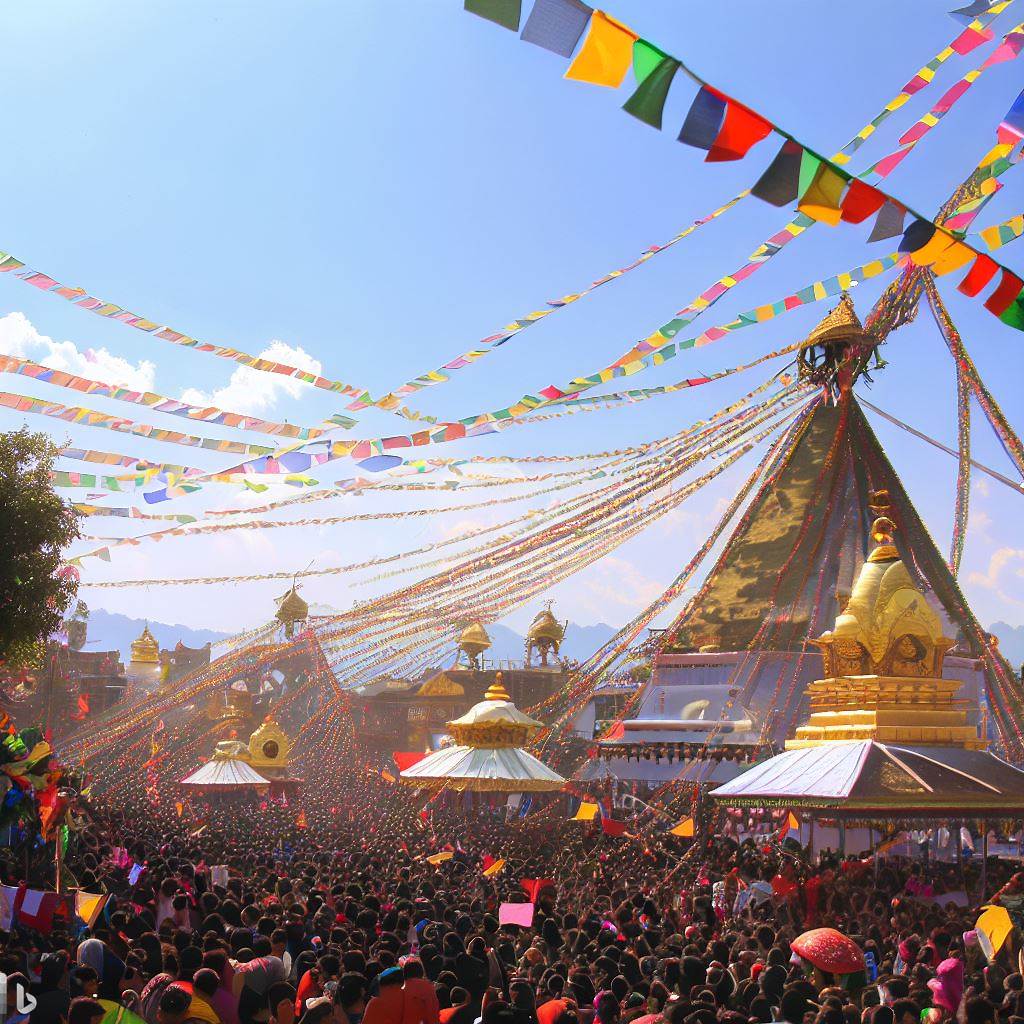Nepal is a country rich in bio-diversity, cultures and traditions. There are many festivals celebrated throughout the year by different ethnic groups and religions. In Nepal, there are more than 125 distinct ethnic groups, each preserving its own unique cultural practices and traditions. This rich diversity gives rise to a multitude of festivals and cultural values that foster a strong bond among all Nepalese people.
Some of the major festivals are Dashain, Tihar, Holi, Lhosar, Buddha Jayanti, Teej, Chhath and more.
Dashain is the longest and the most auspicious festival in the Nepalese annual calendar. It is celebrated by Nepalese Hindu people throughout the globe. It symbolizes the victory of good over evil and the goddess Durga over the demon Mahishasura. It is also a time for family gatherings, community ties and renewal of blessings.
During this festival, people from all walks of life come together at a common location to exchange blessings. The oldest member of each family applies a “tika” on the foreheads of younger family members, bestowing upon them blessings and a monetary gift called “Dakshina” in Nepali. Moreover, as a way of commemorating this special occasion, we prepare and indulge in delicious Nepali dishes.
Tihar is the second biggest festival after Dashain. It is also known as the festival of lights, where diyas (oil lamps) are lit both inside and outside the houses to make it illuminate at night. The five-day festival shows reverence to not just the humans and the Gods, but also to the animals like crow, cow and dog, who maintain an intense relationship with the humans.
The celebration begins with Kaag Tihar, where crows are honored through offerings of food. The following day, known as Kukur Puja, is dedicated to the worship of dogs. Tikas are placed on their foreheads, garlands are placed around their necks, and food is offered. The third day, Gai puja or Laxmi puja, focuses on the worship of cows. They are adorned with garlands, painted with red powder, and fed. This day is dedicated to the goddess of wealth, Laxmi. People decorate their homes with diyas and candles to create a warm and welcoming atmosphere for the goddess.
The fourth day, Govardan Puja, pays homage to oxen in the same way as cows. Finally, the fifth and last day of Tihar is called Vai tika. Sisters perform a special puja for their brothers, wishing for their long and happy lives. In return, brothers give gifts and money to their sisters to symbolize their strong bond. Throughout the celebration, people participate in the joyous and exciting activities of playing “deusi” and “vailo,” which involve dances and songs.
Also, Learn More – Nepali Festival Tihar: the festival of lights & colors
Holi is the festival of colors and joy. It is celebrated in late February or early March, marking the arrival of spring. People throw colored powder and water at each other, play music and dance. It is also a festival of forgiveness and reconciliation, where people forget their differences and embrace each other.
Lhosar means ‘New Year’ in Tibetan language. It is celebrated by Buddhists all over the country at different times. There are three types of Lhosar: Sonam Lhosar (celebrated by Tamang and Yolmo community), Tamu Lhosar (celebrated by Gurung community) and Gyalbo Lhosar (celebrated by Sherpa community). On this day, Buddhist people read prayers, decorate their houses and monasteries, offer special foods to their deities, wear traditional dresses and exchange best wishes .
Buddha Jayanti is the birth anniversary of Lord Buddha, the founder of Buddhism. It is celebrated on the full moon day of May or June. On this day, Buddhist people visit temples and monasteries, offer prayers and flowers, light candles and incense, listen to sermons and recite scriptures. They also celebrate the life and teachings of Buddha by practicing compassion, generosity and non-violence .
Teej is a festival that celebrates the love and devotion of women for their husbands or future husbands. It is also a festival that honors the power and grace of Parvati, the goddess of fertility and marriage.
Chhath is a festival dedicated to the Sun God and his sister Chhathi Maiya. It is celebrated by people from Terai region, especially Madhesi community. It is observed for four days in October or November, after Tihar. The main rituals include fasting, bathing in rivers or ponds, offering fruits and sweets to the Sun God at sunrise and sunset, and singing folk songs.
A global media for the latest news, entertainment, music fashion, and more.





